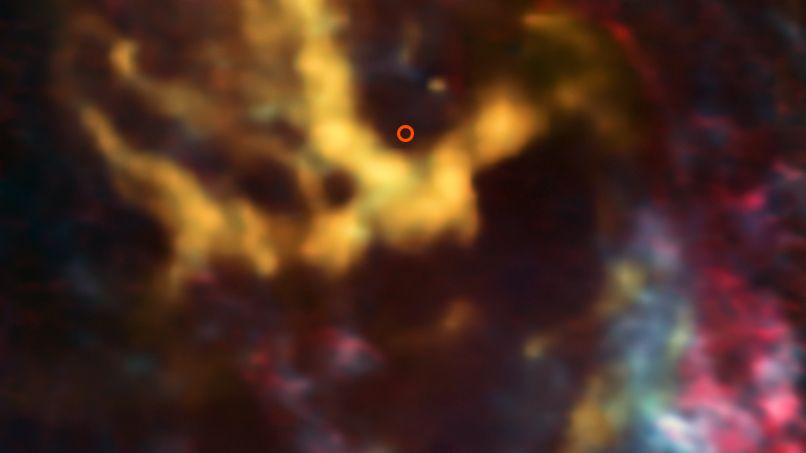
This supermassive black hole, Sagittarius A* (SgrA*), has a mass 4.15 million times that of our sun.
It first revealed itself to scientists as a mysterious source of radio waves from the galaxy's center back in 1931; but it wasn't until 2002 that researchers confirmed the radio waves were coming from something massive and compact like a black hole —— a feat that earned them the 2020 Nobel Prize in physics.
So every black hole in the galaxy can be described with just three numbers: mass, spin and charge.
Once researchers locate a black hole in space, measuring the mass is pretty straightforward —— just check how strongly its mass is tugging on nearby objects.
To get the mass of SgrA*, scientists just observed its influence on the "S-stars," a collection of the Milky Way's innermost stars that get accelerated to incredible speeds as they whip around the black hole in tight orbits.
And researchers assume that, like most large objects in space, black holes don't have strong electromagnetic charges.
(Planet Earth, for example, has some positively charged particles and some negatively charged particles, but they cancel each other out across the whole planet. The other planets and known stars work the same way. Researchers assume black holes are similarly neutral in charge.).
That leaves spin as the remaining measurable feature of SgrA*, and now researchers think they have evidence that the supermassive is an unusually slow spinner.
First, as Live Science previously reported, a black hole's event horizon —— the shadowy region within which not even light can escape the monster's gravity —— grows as it gains more mass, reaching further and further from the singularity of the black hole.
Very fast-spinning black holes should have smaller event horizons than slower-moving black holes of the same mass.
Second, spin is thought to play a role in the two white-hot jets of matter that sometimes launch into space at incredible speeds from a black hole's axis of rotation.
Most Milky Way-sized galaxies have supermassive black holes at their center, and often these galaxies have enormous jets visible bursting from their cores.
Researchers think that a fast-spinning black hole stirs up the disk of accreting matter whirling just outside its event horizon, accelerating some of that matter to burst out as a jet?